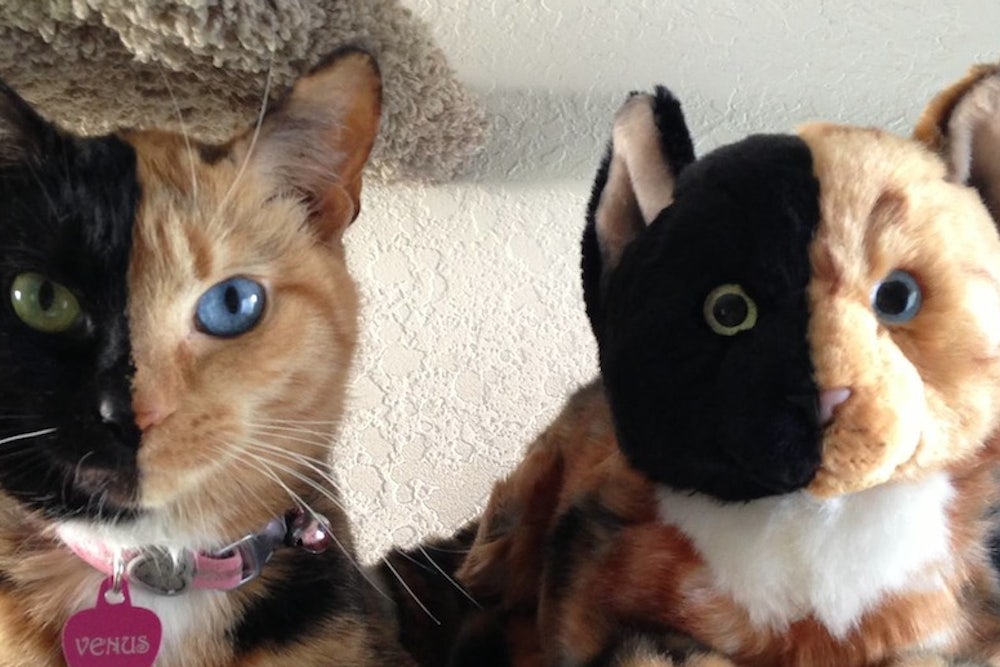If cats rule the web, then Venus the "Chimera Cat” might be queen of the Internet. The Internet sensation's half-black, half-orange face appears to be split straight down the middle, and her eyes are striking, too: one is green, the other blue.
Venus and her owner, an animal adoption activist, have appeared as guests on Fox and "The Today Show," and Venus can hold her own on social media: She has over 200,000 “likes” on Facebook and 165,000 followers on Instagram. She even has her own line of merchandise, including a calendar and a stuffed animal.
Her tag line is “0% photoshopped, 100% born this way!” But why was she born this way? Columbia University Professor of Genetics and Development Virginia Papaioannou explains.
Alice Robb: Is Venus really a chimera?
Virginia Papaioannou: This isn’t what I would call a chimera; it’s a striking example of a calico cat. It’s a fairly straightforward example of X-inactivation mosaicism, with the addition of a white spotting gene. All female mammals have two X-chromosomes. (Males have an X and a Y.) But both X chromosomes aren’t active: In every cell of the body, one of the two X chromosomes is inactivated. (That balances out the effect of the X chromosomes in males and females; since females have twice as many, it makes sense that half of theirs would be inactive.)
In a cat, one gene for fur color is located on the X chromosome. And in any female, expression of all the genes that are on the X chromosome will be “mosaic”—that is, half of them will express one version of the gene (e.g., black fur) and half will express the other version of the gene (e.g., orange fur). The inactivation is random. Here we are talking about the orange/black mosaicism, which is highly visible, but the same pattern will hold true for other genes on the X that have two different versions—or alleles.
A chimera, on the other hand, is a composite individual that was made up of cells from at least two different original embryos. If they fuse together early enough, they will become a single organism whose genetic input is from two completely different individuals. In a mosaic, there’s only one individual and it just happens to have different genetic components active in its cells. A chimera would be a much more unusual and unlikely event.
AR: How often do chimeras occur?
VP: Experimentally, they’re very easy to make. With mice, for example, we make chimeras in my lab all the time. It’s a very standard procedure: You recover embryos before they’ve implanted, when they are just a few cells. That’s a period when the embryo is free-floating in the reproductive tract—it hasn’t attached to anything yet. You then remove the outer coating, which is just a non-living protective layer, and physically combine the embryos. They tend to stick together when they’ve lost the protective outer coating, and they quickly join together in one double-sized embryo. At this stage, it can be returned to a receptive uterus. It then becomes a normal-sized organism—a chimera—and can survive to a normal life span.
In nature, it’s presumably quite rare. It’s not something that happens in the normal course of reproduction.
AR: Why are Venus’s eyes different colors?
VP: It must be the white spotting gene that’s affecting her eyes, because the blue eye has a lack of melanin. This cat has white spots on the chest, and it has white paws. The white spotting gene, the piebald gene, is probably affecting the two eyes differently. One has a sort of normal color and one is blue, which is basically a lack of pigment.
